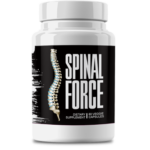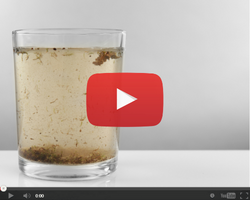This Village-Made Chinese Pain Reliever Eliminates Back And Joint Pain!
Exercises to Alleviate Big Toe Joint Pain

Understanding Big Toe Joint Pain
Big toe joint pain, commonly known as hallux rigidus or hallux limitus, is a degenerative disease that can bring about mobility issues in all age groups. Most of the time, the feeling of soreness and limited range of movements render basic activities such as walking and running almost impossible. Understanding the root sources and manifestations associated with the big toe joint pain is the most important for the treatment and relief of the problem. Therefore, this article will unveil, in general, the origins, symptoms, and options for professional help. Moreover, we will address the issue of which exercises are good for swelling of the big toe joint and the general foot condition.
Common Causes of Big Toe Joint Pain
There are several elements playing their roles in the development of big-toe arthritis. However, arthritis is the most frequent one. Apart from osteoarthritis, rheumatoid arthritis, gout is sometimes the most frequently seen. Injuries, for instance, strains, and fractures, can cause joint pain. Besides, overuse of the joint, as for example, from the uncomfortable running or not the right shoes wearing can also aggravate the condition. A proper treatment plan needs to be based on a diagnosis that is conclusive. Once individuals are aware of the go-to source for the pain, they are more likely to follow the correct steps to ameliorate the problem and ward off future occurrences.
Symptoms to Watch For
Spotting the signs of the pain in the big toe joint is critical and it has to be done before it's too late. The typical signs could be stiffness, swelling, and pain in the area around the joint. Pain might be turned into an acute episode in those activities that will actuate pressure on the toe such as walking or standing. In the worst-case scenarios, a rigid part of the toe can develop that limits the range of motion. Other individuals may see a bump on top of the joint that tells about a bone spur. Getting these signs on time can encourage individuals stuck with this problem to seek appropriate treatment and introduce exercise to alleviate to the pain.
When to Seek Professional Help
Although exercises are a very effective way of managing the pain in the big toe joint, there may be times when professional intervention is very important. For instance, the advice to go to the doctor is given if the pain doesn't disappear after using home remedies and exercises. In that case, the joint may be red, hot, or very swollen, which might show that there is an infection or serious inflammation prompting medical interventions. Early treatment and cure stop the condition from deteriorating and bring relief by the use of proper medical or surgical solutions. In this regard, a consultation with a chiropodist or an orthopedic specialist may be a step toward finding a personalized solution for sustained pain relief.
Benefits of Exercises for Big Toe Joint Pain
Improved Mobility
Enormous progress can be made in the mobility of the big toe joint if a person practices a set of exercises that are meant to work out the joint. Lack of continual movement can lead to reduced flexibility of the big toe joint. Regular movements are the best way to reserve and maintain good levels of flexibility, which is essential for the proper functioning of the body. Releasing discomfort was achieved by an individual getting herself involved in activities that develop joint strength and flexibility. Improved mobility will not only lessen pain but also will make the whole foot operate better. Consequently, it will be able to give you the life that you want without the hindering pain of the joints
Reduced Inflammation
Oftentimes, the source of pain in the big toe is an accumulation of inflammation. There are a lot of exercises that enhance blood circulatory and stimuli that can also work by taking out the stiffness in the process of alleviating inflammation. Fluid retention and joint swelling can be alleviated through gentle exercises and stretches that open up the tissues and reduce the discomfort. This fact indicates that incorporating exercises in your routine to reduce inflammation is one of the best and most successful ways to control the pain you are experiencing. Besides, exercises might be part of other anti-inflammatory treatments. They will offer a holistic approach to pain management and the promotion of long-term joint health.
Enhanced Strength and Flexibility
Muscle reinforcement near the joint of the big toe is a great source of essential backing as this helps in reducing the strain on the joint. Activities that focus on building strength and flexibility can augment the stability of the joint, hence preventing injuries from occurring. Muscles with good strength can act as shock absorber, dissipating the energy at the joint. Flexible exercises, on the other hand, helps to maintain the joint in flexible position, thereby reducing the risk of its stiffness and, in turn, function overall motor. By combining the strengthening and flexibility exercises, the individuals can reach a balanced and effective management of the pain of the big toe joint.
Warm-Up Exercises for Big Toe Joint Pain
Gentle Toe Stretches
Before you can proceed to the more taxing exercises, you have to first do some gentle toe stretches. First, sit on a chair comfortably, being in a position that you can stretch your leg. Gently get your big toe to stretch upward with your hand and sustain it for a few seconds. Throughout rotating the joint many times, this should be the case. Gentle toe stretches are good to prepare the muscles and joints, thus getting them ready for the harder tasks. This easy motion will immediately reduce initial stiffness and also introduce blood flow to that region, guaranteeing a quality start to your routine.
Ankle Rotations
Ankle rotations are a very effective method, in general, for the whole foot including even the big toe joint to be warmed up. Find a comfortable space to sit in and pick one of your legs up slightly from the floor depending on whether you want to rotat your ankle clockwise or counterclockwise. Keep rotating your ankle in a circular motion for the first few seconds onwards. Make sure to change your foot for another 30 seconds. Such decrease in ankle joints tightness contributes to the rise in circulation and the decrease in injury risk. Yoga movement is especially helpful for those with stiffness, remember, before sports if initially performed like a warm-up.
Towel Scrunches
Towel scrunches are a very cool warm-up tackle for the big toe joint that is simple yet effectively. Get a small towel and put it on the ground. Sit down and place your feet flat on the ground. Pick up the towel with your toes by scrunching it towards you and just letting it go. Do this exercise for about a minute by repeating it for a minute. Towel scrunches are a good way to keep the muscles in the foot and toes in an activated state, increasing flexibility and strength. This particular exercise will subside the joint while also sharpening the precision through the toes, therefore it's a great inclusion to your warm-up set.
Strengthening Exercises for Big Toe Joint Pain
Toe Flexor Exercises
Toe flexor exercises are intended to be used in a workout session to improve the muscles responsible for moving the big toe. Sit in a relaxed way and put a loop on your big toe. Fold the band back against your feet while simultaneously pushing the toe to resist the band. Hold for a few seconds, then let go. Do this exercise 10-15 times. Developing the toe flexors can give added support to the joint, therefore making the strain lighter and the pain go away. Correct execution of toe flexor workouts can end up in increased joint stability and better foot health.
Resistance Band Toe Movements
Performing your strengthening exercises with a resistance band can help you get the most out of it. Sit in a comfortable position and loop a resistance band around the big toe. Push your toe as far as it can go against the resistance then return it slowly to the starting position. Do this movement 10-15 times. Resistance band toe movements help to strengthen the muscles around the joint, thus providing essential support and reducing the risk of further injury. This particular exercise is very useful for those who have a weak toe, as it allows the strength to be built gently and safely.
Heel Raises
Heel raises are the ultimate exercise for targeting the calves and feet which include the big toe joint. The last one: Stand with your feet apart, keep them tipping slowly backward onto your toes. See if you can balance. Continue to keep your feet close to the floor; however, you can raise your heels upwards. Try holding this position for a couple of seconds before releasing the heels back down. Do ten to fifteen repetitions of this exercise. The heel raises effectively accelerate the muscles and the stability of the big toe joint also gets enhanced. Furthermore, this exercise improves balance and coordination which is one reason why it is recommended for your strength program.
Stretching Exercises for Big Toe Joint Pain
Big Toe Extension Stretch
The extensions of the big toe are more like a cark exercise for the toes, but it so much fun that I barely even notice that it is actually an exercise. Then, just try to picture yourself sitting with your legs extended. Then, you will be using a hand to pull your big toe gently so that it moves upwards, plus you hold this stretch for 15-20 seconds. You should repeat this exercise several times. The big toe extension stretch is the best way of relieving the tension in the joint and thus allowing improved movement. The regular will of ing of the stretch will be responsible for your painless and joints’ agility gain that, in turn, makes it easier to go about your daily activities.
Plantar Fascia Stretch
Fast read: Plantar fascia stretching, it affects the big toe joint. As one foot is crossed over the other the hand is held in extension to pull the toes toward the shin, stretching the bottom of the foot. Keep this position for 15-20 sec before releasing. Repeat this exercise with each foot several times. The plantar fascia stretch helps to release the foot's and toe's tensions, promoting flexibility and reducing pain. Those especially who are in a tight state due to the bottom of the foot, this exercise is good as they will feel stimulation all over the area.
Calf Stretch
The calf stretch is a good exercise to help the repair of the big toe joint pain. Get near to the wall on the place where two feet are located. Put your leg in the back and the other leg in the front. Try keeping your foot and your buttocks close to the wall and your leg straight as you bend down almost to the lower part of the wall as far as you can, limit your calf. Apart from this, it is allowed to go further if you like. Hold the stretch for 15-20 seconds, then switch legs. The calf stretch increases the blood flow in the calves and this makes the muscles and tendons in the lower leg become more flexible, and the result is relaxation of the hamstrings. This lower tension on the big toe joint reduces the risk of pain because of the muscles and tendons' elongation during your practice. If you give the calf muscles flexibility, your feet will be more readily absorbed by the overpronator running shoes which will lead to fewer injuries. Moreover, your feet will become much more flexible, and you may never get muscle cramps and hamstring pains.
Balance and Coordination Exercises
Single-Leg Stands
You will be relieved when you receive a balance improvement that decreases the big toe joint pressure. Single-leg stands means you are discussing a single leg that can be used while telling someone that the other was injured normal exercise that improves your Riemi and coordination. You will be using the one leg that does not touch the ground to the rest leg the whole time. Work on this for 20-30 seconds and then do the same leg. To make it more challenging, you can close your eyes on an unstable surface. Such single-leg stands depict more advanced exercise programs that target multiple muscle groups around the joint. Increases core strength, that being the most important aspect that results in preventing falls, and complex coordination are a priceless part of your fitness program. This workout relates to potential falls and primary treatment from other injuries. It should be integrated into regular routines before a needed fall or injury.
Toe-to-Heel Walk
The toe-to-heel walk will train your ability to balance and coordinate in the most minimal yet effective manner. Walk between the lines in a straight way, making sure the heel of one foot is placed right in front of the toes of the other foot. Make sure the total number of continuous repetitions is not less than 5. The toe-to-heel walk activity is responsible for improving the sense of body location (that is, allowing us to be aware of our position in space). A stronger toe joint will not only protect from pain, but also make the leg less likely to get hurt because the muscles improve. This move can help to keep the weight off the front of the foot and bring about a better and a more flexible foot. With this you will have better overall balance and foot health.
&Balance Board Training
A balance board is one of the best ways to take the balance and coordination exercises a step further. Step onto a balance board, with your legs about shoulder width apart. Keep your balance on the board for a period of at least 1 to 2 minutes. More complex things such as gently changing your body weight in the direction of the x-coordinate respectively, or in general, left to right or forward and backward, can be done for additional difficulty. The balance board makes it possible to work out the muscles near the joint and the overall stability of the body. This practice is the basis of the realization that proprioception can be developed and, as a result, the injuries are less likely to happen, that is, thus, making the exercise a great choice for those who are looking for a proven solution to their toe bone problem througherecise program most of the days of the week but make sure to give the body rest some days as well that way you do not overwork the muscles.
Cool-Down and Recovery Tips
Icing and Elevation
After you go through all those exercises, it is mandatory to cool down the body and make sure the recovery is on the right track. Apply a cold pack to the swollen joint to lessen pain and control inflammation. Just pad an ice pack in a cloth and put it onto the swollen part of the foot for about 15-20 minutes. It is also advisable to elevate your leg which will improve movements of blood and reduce swelling. These are some of the most crucial tips for recovery that can amplify the impact of your workout program on your body as they give you relief and reduce further pain. Cooling down in a routine manner eliminates a high percentage of your big toe bone pain, thus leading to better ankle management in the long run.
Gentle Massage Techniques
A simple massage technique can excel in the relaxation of the big toe joint muscles that are generally under pressure. Start off by gently using your fingers to to massage in light circular motions around the joint. This action assists in the blood circulation and, as a result, minimizes the stiffness. Massage can be part of the bigger exercise strategy in which the person suffers less and their joint gets stronger. Such gentle massage techniques that are part of the recovery process connected to the whole strategy for pain management, delivered continuous relief and also resulted in better foot functionality improvements managed over the longer term phase.
Proper Footwear and Orthotics
One can significantly decrease the intensity of the big toe joint pain by proper footwear choice. Among the shoes offered on the market, try to pick the ones that can give the right support without making your feet painful. In order to make the right decision, consider the key features of shoes that you are going to purchase, such as support and shock absorption. Less expensive over-the-counter arch supports are also an option when the person hardly has any pronation and wants to add more cushioning. Custom-made orthotics can include additional support and relieve stress on the area. Personalized orthoses are the best choice, as they are designed specifically to address the functional problem of your foot or the idiopathies caused by abnormal biomechanics. Money wisely spent on a good pair of sneakers and therapeutically-designed inserts can render your practice to be performed injury-free as well as provide the right support. Footwear has a direct impact on an individual's performance during physical activities. Not only are the injured areas better supported, but the people involved enjoy more stable performances, with fewer incidents of injuries. The deployment of this platform imparts sustainability into both the shoe and the person who buys it.
Preventing Future Big Toe Joint Pain
Regular Exercise Routine
There is no way to have toe joint pain further if you stick with enough physical activities regularly. One must always do exercises specifically targeting the muscles of the toes, to prevent the hurt of weight-bearing or let them become stronger. Walking is a recommended type of exercise that helps preserve the joints and the muscles of the feet and legs. Exercise is proven to be highly successful and rewarding in dealing with foot problems. Tight calf muscles commonly accompany toe joint pain, and they can exacerbate the situation. Even with just a little exercise, muscles can be toned up and rehabilitated. Including different types of exercises in your routine provides complete sustenance for your joint health that enhances the overall health of your feet. Consistent physical activity not only is a pain killer at the moment but also a medicine for the future, where you can be safe for the whole lifetime.
Maintaining a Healthy Weight
One of the simplest ways to decrease the endurance of the big-toe bone is through weight loss. When the muscle straightens the toe, excess weight is stimulated, thus causing the big toe bone pressure referred to as a pain. You can manage weight effectively through a well-proportioned diet and regular exercise. If weight is kept in the proper range of healthy, it is less likely to cause developmental problems or to hurt the joints. Besides, taking weight into account, you will also see improvement in the health of the foot in general.
Foot Ergonomics and Proper Posture
Foot ergonomics and maintaining the correct posture can be the perfect steps to keep the feet away from toe joint pain. Confirm that your feet are correctly positioned when you stand, or shuffle hence less pressure is placed on your toes. Embed ergonomic principles daily through activities like choosing the right shoes and custom orthoses. Furthermore, standing upright can limit the degree of possible injuries since it results in the removal of pressure off the joints that supports a healthy foot. In doing the aforesaid, the first issue is directly tackled. The relief is temporary. Moreover, the likelihood of minimal or zero pain in the near future is so high. Thus, a happy and active life will be your lot.








